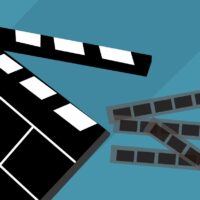How a programmer can write an effective resume
A resume is a means to advertise yourself, it is the first means you use to present yourself and try to state that you are the best choice for your potential employer.
On your resume, you should demonstrate your major assets, such as:
- Qualifications
- Experience
- Accomplishments
- Capabilities
- Qualities
You should prepare your resume in a way that gives the impression at a glance that you are a perfect fit for the job you are applying for. An employer is unlikely to take 10-15 seconds to decide whether to call you for an interview after looking at your resume. If your resume is well-written, you are bound to get shortlisted as a candidate, it doesn’t matter if you have the required potential or not, but you will get a call, otherwise your resume will become part of the trash garbage can.
The first draft of your resume may not be as impressive because a resume is always an evolving document that improves over time, so keep changing and improving it after its first draft and keep various versions to yourself.
Now let’s create a simple resume step-by-step that you can use to get a job as a programmer.
Address Section
This section will be at the top of your resume with details about your name, address, phone number, and email address. Align this section on the left edge and put a bold line below the section to separate it from the rest of the document.
If you are currently employed, you can put your company name just below your name.
Summary
This section begins with the heading “Summary,” followed by a list of your overall experience, accomplishments, certifications, positive attributes, etc. It’s a lot like a movie trailer where the editor saves all the great scenes from the movie and after watching this trailer. you’re excited to watch the full movie. When documenting this section, you will need to choose attractive and heavy words.
To compose a summary section, you will have to think for a while in a calm mind, write down important points about yourself on plain paper, and check to make them more impressive and effective. If they don’t have any impact on the reader, there’s no point in including them in the summary section.
If you just graduated, you should talk about your small but impressive projects you did at university, highlight your accomplishments and project opportunities, etc.
Education Details
Since you have already talked about your experiences and accomplishments, now let’s start talking about our education. There are many organizations that prioritize your education. Therefore, it is important to talk about your academic achievements. You should put your highest degree on top and then downgrade at lower levels.
It is extremely important to provide information about your position, rank, percentage or CPI, and degree or certification, otherwise many employers will throw your resume in the trash if you don’t give a clear picture of your education.
Technical Skills
The next section of your resume will present your technical skills. This section will begin by talking about your basic skills that you are good at. So first list all of the skills that you are completely confident in, and then leave the rest of the skills at lower levels.
If you only know one skill, just talk about that skill, for example, if you have no experience with any protocol, then don’t list that line on your resume.
Project detailing.
Here goes the real story, and it’s really important to show all your projects, assignments, etc. The reader needs to understand exactly what you have done in the past. This is where you get your experience with different types of projects, people, tools, and technology. You should clearly state what was yours, organizations, project year, roles, responsibilities, value added, accomplishments, etc. for each project or position. You should also mention what tools and technology you used during that project.
If your experience is not project-based, you can simply call this heading “Experience Details” and list the entire experience either in bullet points or in simple and short 2-3 paragraphs.
You will start with the most recent project and continue to list all projects up to the oldest. If you’ve only done an academic project or thesis project, you can mention those projects along with your university projects in the same format.
Strengths
Having provided complete information about all of your projects, you can now talk about your major strengths. Look at the following examples, you may not have all of your strengths, so list only what you have.
Additional Activities.
This section is optional because it is always optional that you participate in some extracurricular activities at the same time for different roles, and no extra classes are required. Sometimes this section can carry a lot of weight, especially when you have the same curriculum and your resume reader. I give you a simple example to list your academic activities.
Personal Information.
This will be the last but mandatory section of your resume, but it will provide all the important information about you.
Conclusion
Now you are done, and you have a great resume in your hands. To enhance the value of your resume, follow these tips:
Always give a summary of your resume at the beginning.
Keep your resume file name short, simple, and informative.
You can leave your small picture in the top right corner of your resume.
Don’t use all kinds of unnecessary formatting on your resume. Keep your resume as simple text as possible.
Don’t include too many phone numbers, email addresses, or addresses.
Don’t make your resume too big. It should be as accurate as possible.
Always describe in detail the roles and responsibilities you took on during any project.
Make sure your resume is neat and free of typos.
Never give your reason for leaving your previous job, your salary expectations, problems with your current job





